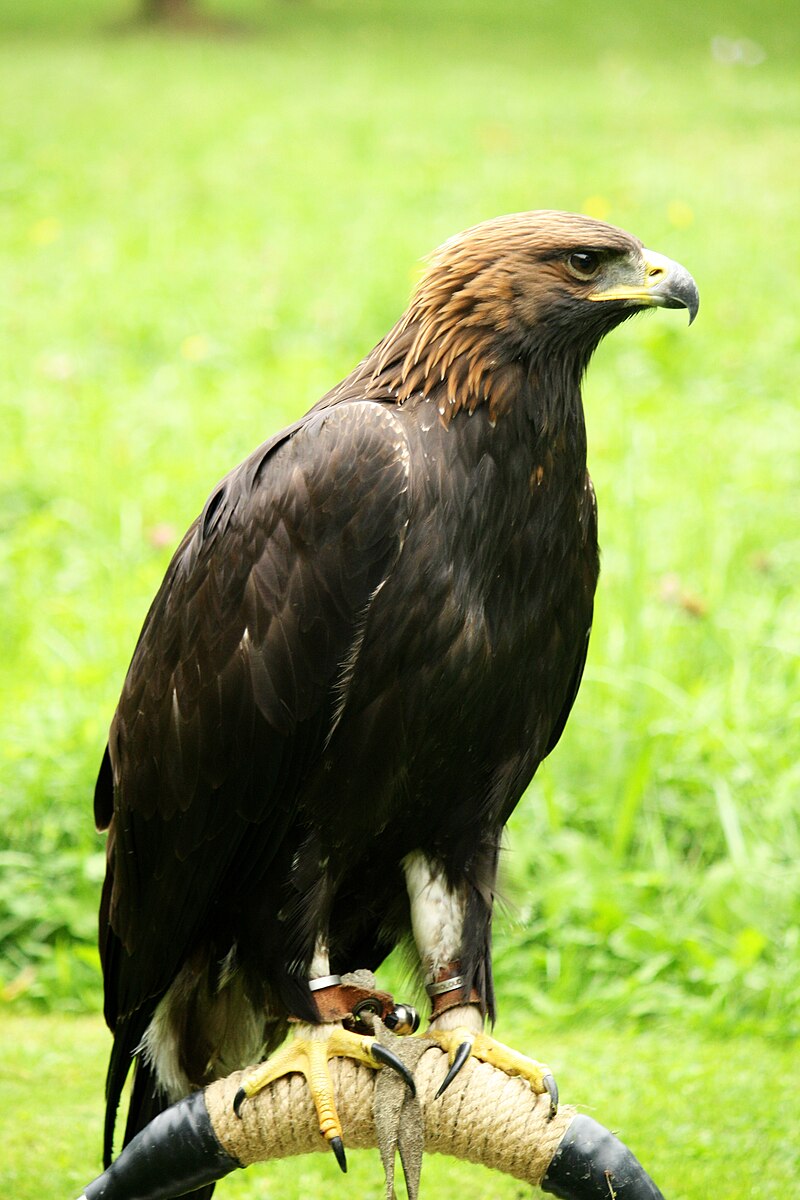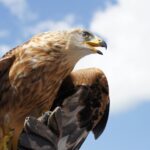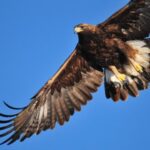Golden Eagles are generally solitary birds, found alone or in pairs, but not in large groups like some other raptors such as Bald Eagles. However, there are instances where they may bathe in small groups or roost together in cold weather, and immature birds often associate with each other in winter.
The Solitary Nature of Golden Eagles
Golden Eagles are known for their impressive flying abilities, with broad, long wings and a unique slightly dihedral flight pattern, where the wings are held in a slight, upturned V-shape. They are sometimes considered the best fliers among eagles and perhaps among all raptorial birds, capable of reaching speeds of up to 190 kilometers per hour (120 mph) when gliding and up to 320 kilometers per hour (200 mph) when diving.
Despite their solitary nature, Golden Eagles have been known to engage in territorial displays, sometimes preceded or followed by intense bouts of undulating displays. These displays may involve the invader rolling over and presenting talons to the aggressor, and in rare cases, the two eagles may even lock talons and tumble through the air.
Exceptions to the Solitary Rule
 Image source: Golden Eagle by Atillak
Image source: Golden Eagle by Atillak
While Golden Eagles are typically found alone or in pairs, there are a few exceptions to this rule:
-
Bathing in Small Groups: Golden Eagles have been observed bathing in small groups, particularly during the breeding season or in areas with abundant water sources.
-
Roosting Together in Cold Weather: In colder climates, Golden Eagles may roost together in small groups to conserve body heat and energy during the winter months.
-
Immature Birds Associating in Winter: Younger, immature Golden Eagles often associate with each other in the winter, forming small flocks or groups as they learn to hunt and survive on their own.
The Impressive Size and Capabilities of Golden Eagles
In terms of size, Golden Eagles are the largest eagles in North America, with a wingspan of 6′-7’3″ and a length of 2’3″-2’9″. They belong to the family Accipitridae, which includes hawks, eagles, vultures, harriers, and kites.
Golden Eagles are known for their exceptional hunting skills, using their powerful talons and sharp beaks to capture a wide variety of prey, including small to medium-sized mammals, birds, and even some reptiles and amphibians. They are skilled at both soaring and powered flight, allowing them to efficiently search for and pursue their prey.
Territorial Displays and Interactions
As mentioned earlier, Golden Eagles have been observed engaging in territorial displays, which can sometimes involve intense interactions between individuals. These displays may include:
- Undulating Displays: The eagle may perform a series of undulating, or wave-like, flight patterns to assert its dominance and defend its territory.
- Talon Presentation: The invading eagle may roll over and present its talons to the aggressor, a display of strength and intimidation.
- Talon Locking: In rare cases, two Golden Eagles may lock talons and tumble through the air, a dramatic and dangerous display of their power and aggression.
These territorial interactions are believed to be important for maintaining the solitary nature of Golden Eagles and ensuring that each individual has access to the resources it needs to survive and thrive.
Conclusion
In summary, Golden Eagles are primarily solitary birds, found alone or in pairs, but not in large groups like some other raptors. However, there are a few exceptions where they may be observed in small groups, such as during bathing, roosting in cold weather, or when immature birds associate with each other in the winter. Despite their solitary nature, Golden Eagles are known for their impressive size, hunting abilities, and territorial displays, which help to maintain their dominance and access to resources within their respective territories.



